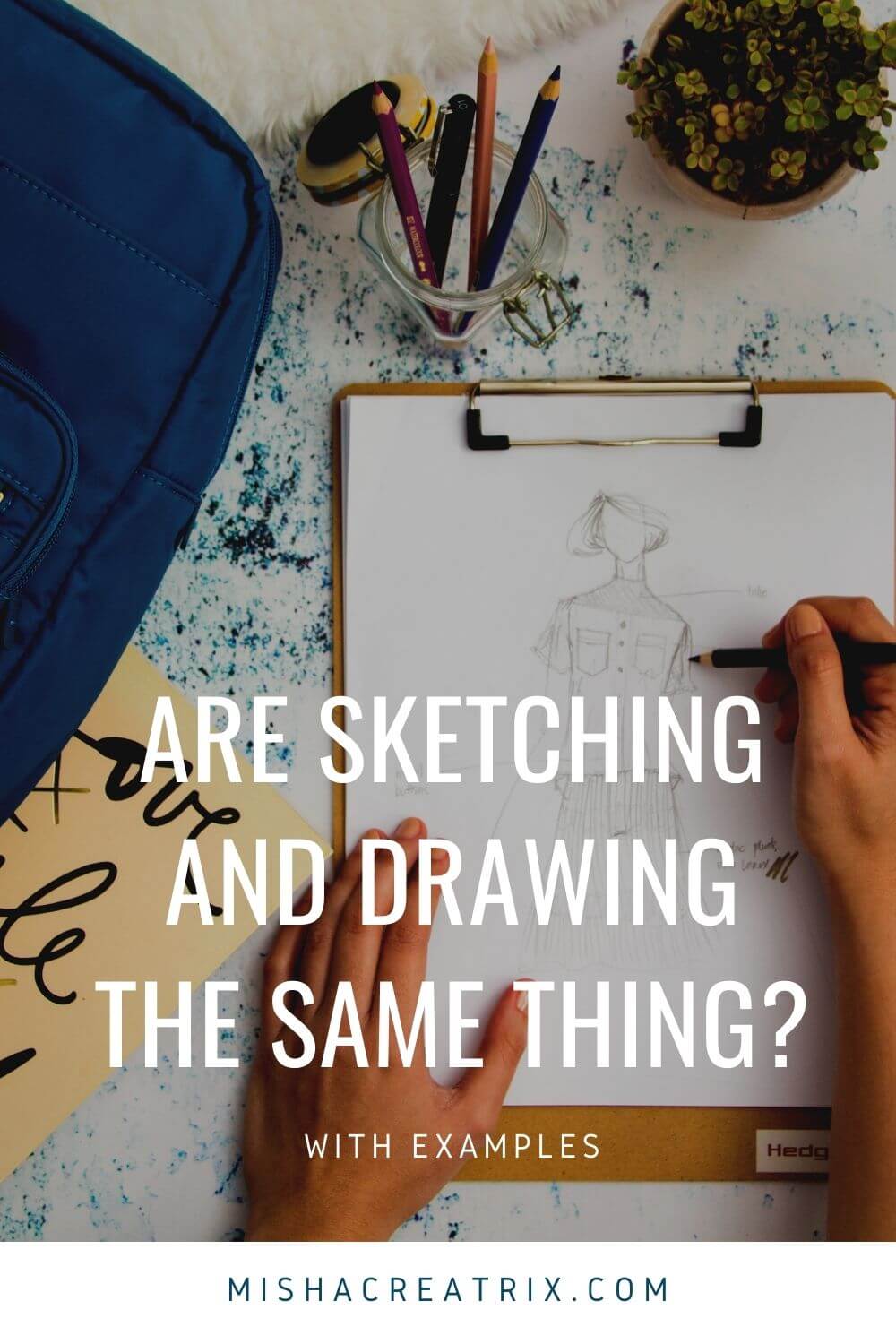Is Drawing And Sketching The Same Thing
Hey y'all! So you're looking to sharpen your artistic skills, and you keep hearing the terms sketching and drawing thrown around, but you're not quite sure what's what. Well, don't fret, because I've got you covered.

First things first, let's establish the basics. Sketching and drawing are NOT the same thing. While they may seem interchangeable, they have distinct differences that set them apart.
Sketching is the process of quickly laying down lines and shapes to capture the essence of a subject. It's often used as a preliminary step before moving on to a more finished piece. Think of it as rough draft of sorts.
Drawing, on the other hand, is the act of executing a more polished and detailed piece of work. It involves careful observation and attention to detail, as well as a more thorough understanding of the subject matter.
So, now that we've got that straightened out, let's dive a little deeper. When it comes to sketching, there are a few different techniques you can use:
- Gestural Sketching: this technique involves capturing the basic movements and gestures of a subject. It's quick and loose, and often used in figure drawing.
- Contour Sketching: this technique involves creating a continuous line drawing to outline the shape of a subject. It's great for honing your observational skills and getting a feel for proportion and perspective.
- Storyboard Sketching: this technique is used to plan out a series of images, such as for a comic strip or animation. It's all about capturing the narrative and plot.
When it comes to drawing, things can get a bit more complex. There are a multitude of techniques and styles to choose from, each with their own unique set of challenges.
Some popular drawing techniques include:
- Hatching and Cross-hatching: this technique involves using a series of parallel or intersecting lines to create shading and value.
- Chiaroscuro: this technique involves utilizing contrasting light and dark areas to create a sense of depth and dimension.
- Surrealism: this style is all about creating dreamlike or fantastical scenes that go beyond the bounds of reality.
Now, while I could go on and on about the various techniques and styles, I'm sure you're eager to get started on your own artistic journey. So, without further ado, here are a few tips to help you get started:
- Start Small: don't overwhelm yourself by trying to tackle a huge, complex drawing right off the bat. Begin with something simple, like a still life or a face in profile.
- Practice, Practice, Practice: the only way to get better at something is to do it as often as possible. Try to set aside time each day to work on your art, even if it's just for a few minutes.
- Observe Carefully: really take the time to look at your surroundings and study the details. Notice the way light plays across surfaces, and the way colors interact.
- Don't Be Afraid to Experiment: art is all about trial and error. Don't be afraid to play around with different materials or techniques to see what works best for you.
- Find Inspiration: seek out artists that inspire you, and study their work. Whether it's a contemporary master or your favorite comic book illustrator, take note of what makes their art so compelling.
How to Sketch and Draw
Now that you've got a basic understanding of sketching and drawing, it's time to put that knowledge into action. Here's a step-by-step guide to get you started:
- Gather Your Materials: for sketching, all you really need is a pencil and a sheet of paper. For drawing, you may want to invest in some higher-quality materials like charcoal or colored pencils.
- Choose Your Subject: whether it's a still life, a landscape, or a portrait, pick an object or scene that you find visually compelling.
- Sketch the Basic Shapes: start by sketching in the basic shapes and outlines of your subject. Don't worry too much about getting everything perfect at this stage.
- Add Detail: once you have the basic structure down, start adding in more details like shading and texture. Here's where you can start to experiment with different techniques and styles.
- Refine Your Drawing: keep refining your work until you're happy with it. This may involve erasing and starting over a few times, but that's all part of the process.
- Sign and Date: once you're finished, sign your work and date it. This will help you track your progress over time.
And there you have it, folks! A crash course in sketching and drawing. Remember, the most important thing is to have fun and enjoy the process. Happy creating!



Post a Comment for "Is Drawing And Sketching The Same Thing"